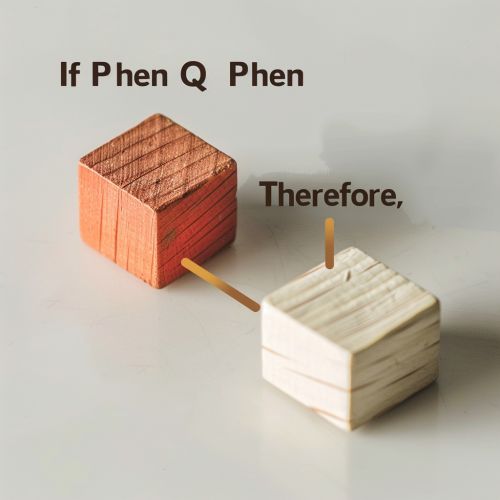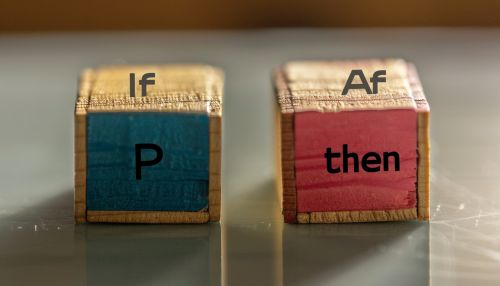Modus Ponens
Overview
Modus ponens is a form of valid deductive argument in classical logic. It is a rule of inference, a logical process that is used to derive a conclusion from one or more premises. The rule can be stated formally as: "If P, then Q. P. Therefore, Q." This rule is often used in mathematical proofs and philosophical arguments.
Definition
Modus ponens is a type of argument form in logic, specifically in propositional logic. The argument has two premises and a conclusion. The first premise is a conditional statement, which is a statement in the form "if P then Q". The second premise is an affirmation of the antecedent, P. The conclusion is the consequent, Q.
History
The concept of modus ponens dates back to ancient times, with its origins in the work of Aristotelian logic. It has been a fundamental rule of logic since then, used in various fields including philosophy, mathematics, and computer science.
Usage
Modus ponens is used in various fields to derive conclusions from given premises. It is a fundamental rule in classical logic, and is also used in other systems of logic. It is used in mathematical proofs, philosophical arguments, and programming languages.
Formal Representation
In formal logic, modus ponens is represented using logical symbols. The rule can be written as: (P → Q), P ⊢ Q. Here, the symbol '→' represents 'if...then...', 'P' and 'Q' are statements, and '⊢' denotes that Q is a logical consequence of the premises (P → Q) and P.
Validity
Modus ponens is a valid form of argument, meaning that if the premises are true, then the conclusion must also be true. This is because the form of the argument ensures that the truth of the premises guarantees the truth of the conclusion.
Related Concepts
Modus ponens is related to several other concepts in logic, such as modus tollens, hypothetical syllogism, and disjunctive syllogism. These are all types of valid argument forms.
Criticisms
While modus ponens is widely accepted as a valid form of argument, it has been subject to some criticisms. Some philosophers argue that there are cases where the argument form leads to false conclusions, known as paradoxes of material implication.
See Also


